Auschwitz exhibit goes to only 2 US cities. Here’s how Kansas City became one of them
The first touring exhibition dedicated to the notorious Auschwitz concentration camp drew 200,000 visitors at its first North American stop, New York City.
It goes to only one other North American city before returning to Europe. “Auschwitz. Not long ago. Not far away.” will open June 14 at Kansas City’s Union Station.
“I would say to you it’s the most significant exhibition that we’ve ever mounted because of the topic, the timing,” said George Guastello, president and CEO of Union Station. “And it’s more than an exhibition, it’s a cultural agent of change for our community.”
Guastello expects the exhibition to generate large numbers in Kansas City as well — sales stood at 56,000 from 46 states earlier this month.
“We’ve never experienced this much community outpouring in advance ticket sales,” he said.
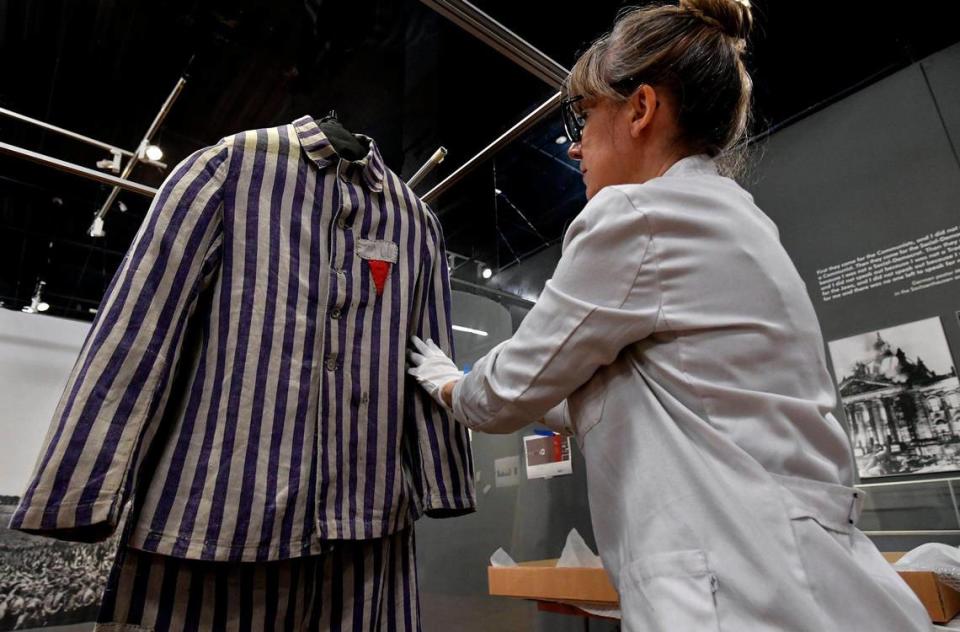
Kansas City landed the exhibition after a courtship Guastello began five years ago with exhibition director Luis Ferreiro. He is CEO of the Spanish company Musealia, which creates and manages large-scale traveling exhibitions and conceived the show in conjunction with the Auschwitz-Birkenau State Museum in Poland.
“We were immediately enamored with his idea and his passion and his storytelling,” Guastello said.
“It’s been a journey and a learning experience that far exceeds anything that we’ve ever been involved with. We had to sell Luis on Kansas City. We still have to sell Kansas City, because most people think it’s Kansas and we’re a tiny town.”
Despite competition from the likes of Philadelphia and Los Angeles to join New York on the exhibition’s itinerary, Ferreiro was buying what Guastello was selling.
“To work with people that believe this is more than an exhibition, that it’s a statement, that it’s a message, that it’s a reflection for the community, I think is really what engaged us from the very beginning,” he said.
“For us, this is very important, because we are telling this story with our heart. For us it is years of work, and we want to put it in the hands of people who understand the historical value of what we are doing.”
The exhibit is being presented to U.S. audiences 75 years after the liberation of Auschwitz.
Guastello said it will remain in Kansas City for International Holocaust Remembrance Day, which is Jan. 27, and will close shortly thereafter.
Ferreiro said the artifacts contractually must be back in Poland by the end of February.
The opening date also is significant. The first Polish prisoners arrived at Auschwitz on June 14, 1940, which is considered the death camp’s inception.
And it arrives as antisemitism is back in the news. At a recent rally in Overland Park, community leaders pointed out that antisemitic attacks rose nearly 80% in the last month, with more than 220 instances reported across the country.
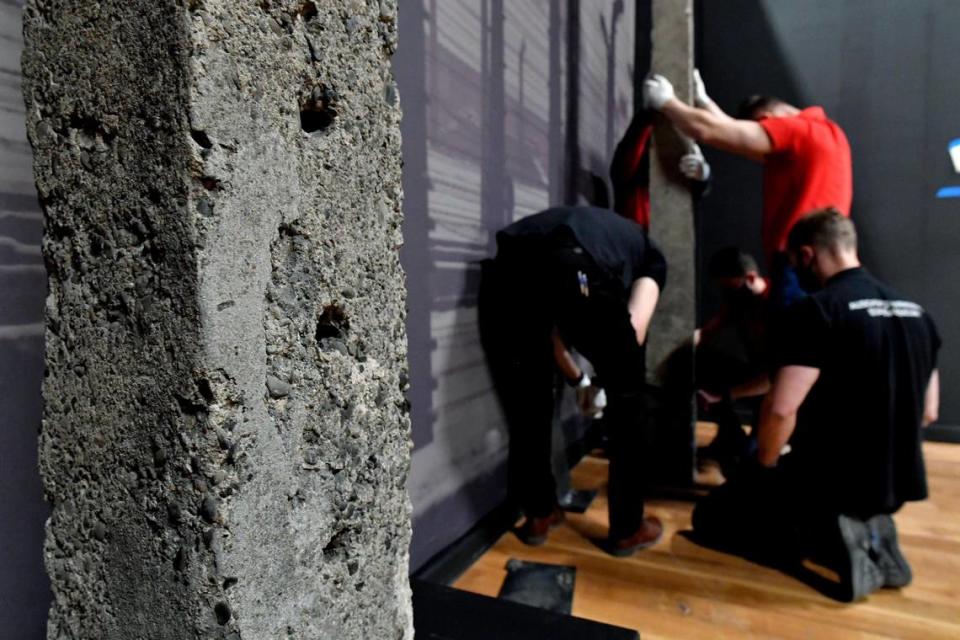
‘Story of people’
The objective of the exhibition, Ferreiro said, is to make people reflect about the horror without horrifying them.
“We don’t show a single picture of a corpse,” he said. “We don’t show any pictures that somebody could be horrified by, physically speaking. Of course, everything we show, unfortunately, is a horrible story.
“It’s easier to make people cry, but that’s not what we want.”
The exhibit features more than 700 original artifacts and 400 photographs drawn from institutions and museums around the world. Auschwitz was the Nazis’ largest concentration camp, where they killed more than 1 million people, almost all of them Jews.
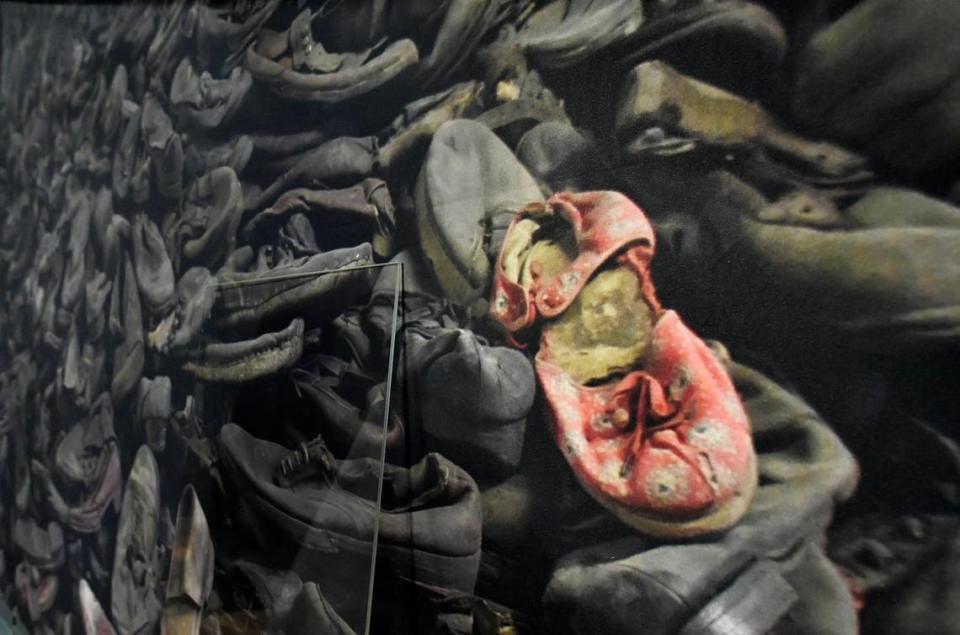
The Auschwitz-Birkenau State Museum has provided hundreds of personal items that belonged to survivors and victims, including clothing, suitcases, eyeglasses and shoes. Other artifacts include concrete posts that were part of the compound’s fence, a desk and other possessions of Auschwitz commandant Rudolf Höss and an original German-made freight wagon used to deport Jews to the ghettos and extermination camps in occupied Poland.
They will be displayed across 20 thematic galleries in Union Station’s 20,000-square-foot Bank of America Gallery on the lower level. Each visitor will be provided an audio guide with headphones.
The Auschwitz exhibition debuted in December 2016 at Madrid’s Arte Canal Exhibition Centre, where it drew more than 600,000 people. It spent two years at New York’s Museum of Jewish Heritage — A Living Memorial to the Holocaust, though the pandemic closed it to the public for part of that time. Its last day there was May 2.
Guastello, who saw the exhibition in Madrid, said Ferreiro’s presentation is “a story of people and people’s passions,” adding, “You don’t see horrific pictures. What you see is a horrific experience.”
That being said, the exhibition is not designed for children. Union Station is recommending ages 12 and up, but Guastello acknowledged it is up to parents to decide whether to bring younger children.
“It’s a very difficult subject, even for an adult,” Ferreiro said.
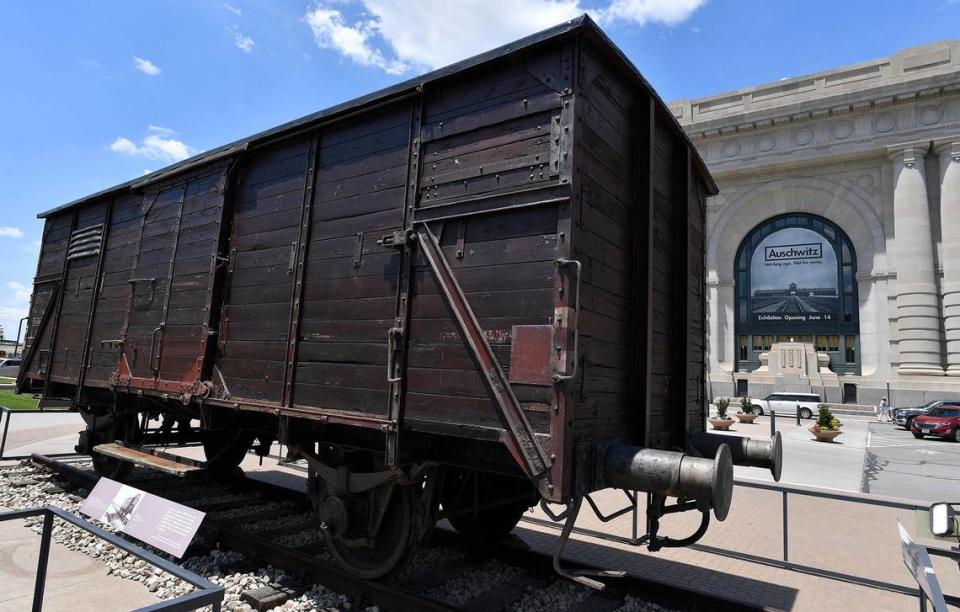
Remembering the Holocaust
Educating people of all ages is a goal for the exhibition’s organizers.
According to a recent survey by the Conference on Jewish Material Claims Against Germany, 48% of U.S. adults ages 18 to 39 (millennials and Gen-Zers) can’t name a single camp or ghetto established by the Nazis during World War II (there were more than 40,000). Moreover, 11% believe Jews caused the Holocaust and 15% think holding neo-Nazi views is acceptable.
Sixty-three percent of the respondents did not know that 6 million Jews were killed during the Holocaust.
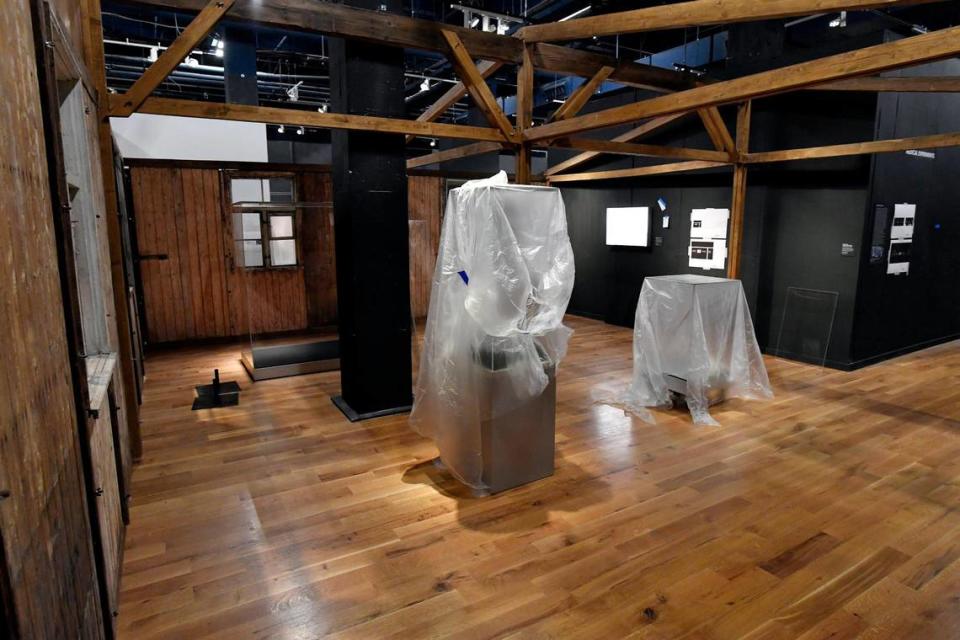
That level of ignorance provides Ferreiro with a challenge.
“What we are trying to do with the exhibition is to explain actually how this happened,” he said. “And it’s not only to look back into the past … but it’s also for ourselves nowadays, because we need to be able to understand how this could happen in the most technologically and culturally advanced society of its time.
“There are many survivors that actually say the only thing that would be worse than Auschwitz would be people forgetting Auschwitz.”
Ferreiro has walked through his creation with Auschwitz survivors and said it is a humbling experience.
“It makes one feel very stupid, because what can you say to somebody who has been through that?”
Guastello’s pledge to victims and survivors alike is simple.
“They will never be forgotten, and their stories will never be forgotten,” he said. “And may that lead to a better understanding that something like this that happened to them would never happen to our children or our grandchildren or our great-grandchildren.”
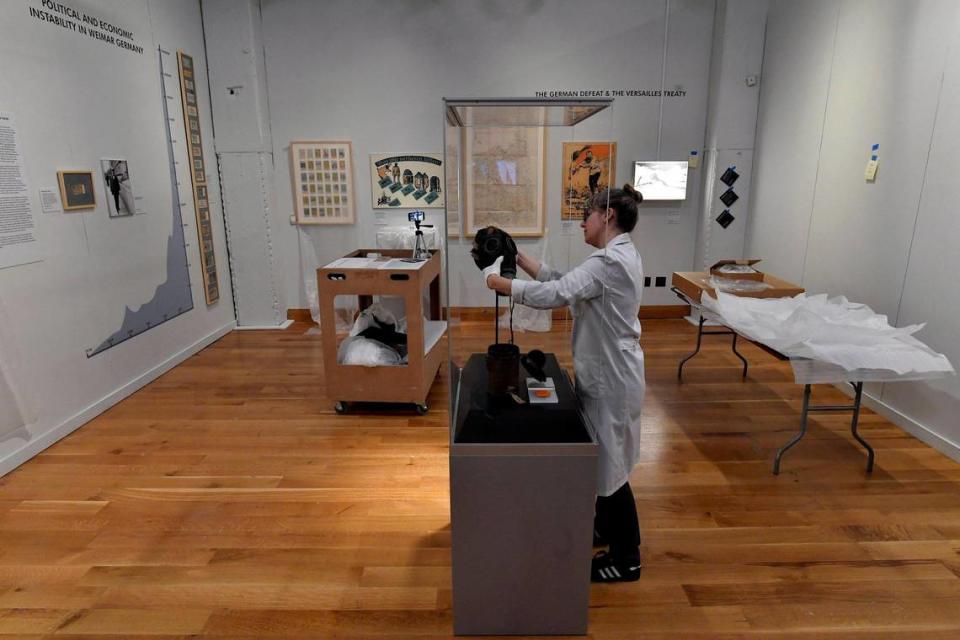
Financial risk
Given the subject matter and its importance, Guastello understands comments on social media that attendance should be free. He said the finances simply don’t allow it.
“This is a multimillion-dollar investment for this organization to bring to Kansas City, and it is a calculated financial risk to bring it here,” he said.
He said donors who typically don’t support Union Station’s touring exhibitions have stepped forward in this case, however. They even suggested programs to help those who might not be able to afford the entry fee.
People with food stamp cards can see the exhibition for $5, Guastello said, and admission will be free for students from seventh grade through high school if they’re in an “underserved community.”
He expects students to appreciate “Auschwitz. Not long ago. Not far away.” every bit as much as adults.
“What’s going on in our world is resonating with young kids,” he said.
He thinks attendance could surpass Union Station’s high-water mark of about 200,000 for the first of two Titanic exhibitions 20 years ago.
And, as he pointed out, this might be a once-in-a-lifetime opportunity.
“It may not be coming to a town near you after Kansas City,” Guastello said.
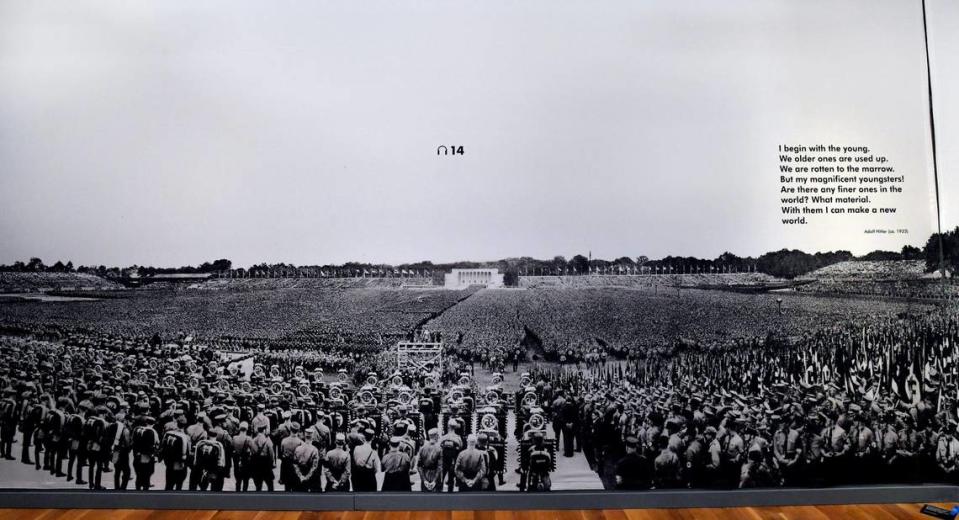
Visiting ‘Auschwitz’
Union Station will present “Auschwitz. Not long ago. Not far away.” from June 14 through late January. It will be open 10 a.m.-6 p.m. daily; last tickets for 4 p.m. Admission: adults $23.50, students (ages 3-22) $17.50, seniors (ages 55 and up) $19, Union Station members and group members $15. See unionstation.org.
Note: Union Station and the Midwest Center for Holocaust Education will present a series of public and educational programs featuring experts on the Holocaust during the run of the exhibition. A list of speakers and programs is available at mchekc.org.

